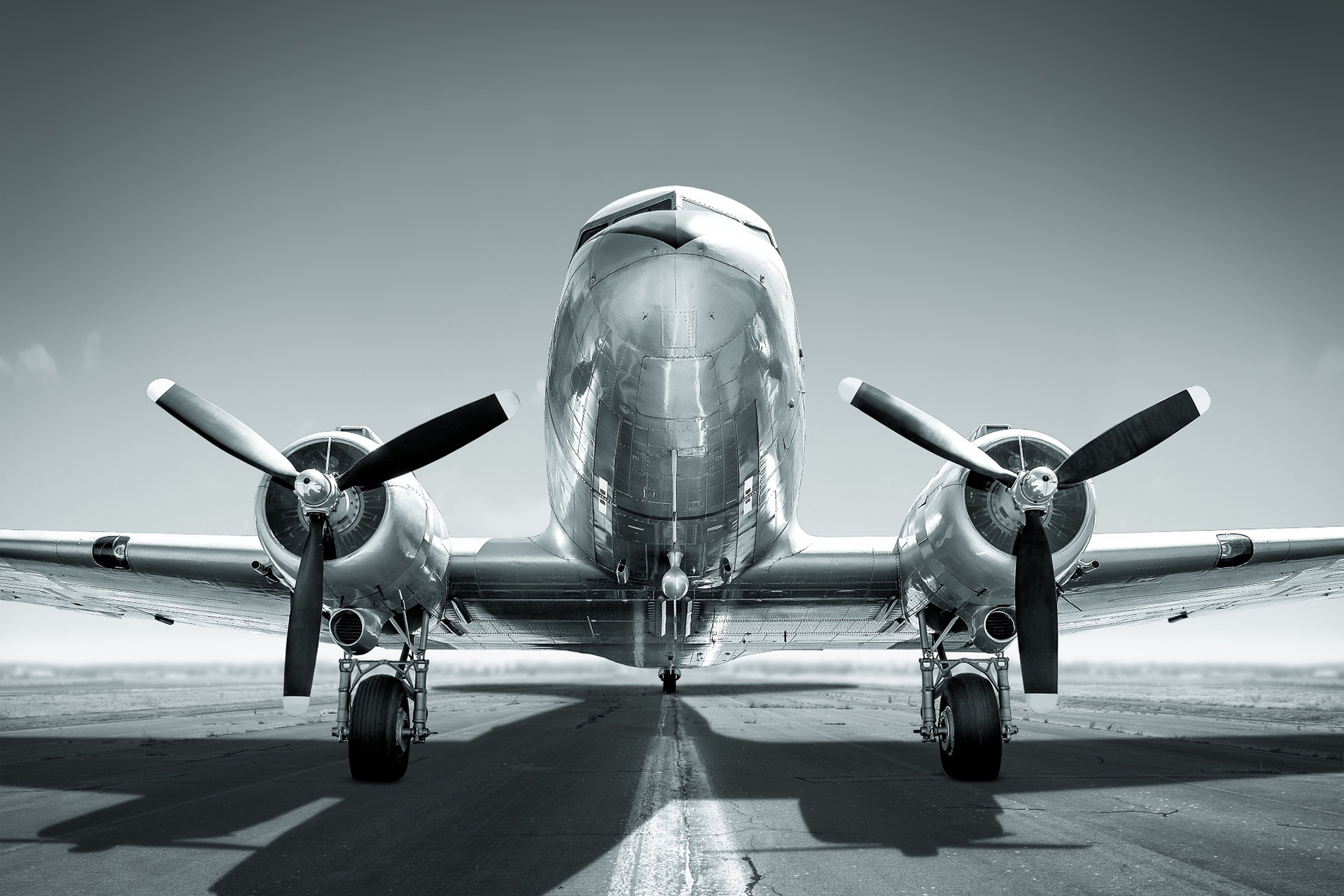
Airplane Travel Gains Popularity
This is a story from the Arlington Journal, September 20, 1929
Board! Board! All Board! Cisco, Abilene, Sweetwater, Big Spring, Midland, and El Paso. Connections with western routes. Ship leaves in two minutes; get your ticket ready, call your port. Board!
Contact! Contact! Off! Contact! Contact! After priming the motor, the propeller is given another twist and this time the motors of the huge monoplane start with a boom and gradually tone down to a rhythmical hum. (Editor's note: a monoplane has a single wing surface, as opposed to a bi-plane; the airplane was a Ford Tri-motor; production began in 1925).
Your ticket bought your baggage checked and your seat assigned, you are ushered into the plane. The interior of a millionaire's limousine could not be more comfortable or more elegantly appointed. Adjustable windows assure coolness until the plane has reached a high altitude, where the breeze is so cool that the windows are closed.
With all the passengers on board, the mighty plane starts across the field and in a few moments is leaving the ground. As the ship gains altitude the city below begins to look like a miniature layout in a sand pile. Up, up, over Marine Park with its swimming pool, a tiny mirror lying on the ground reflecting the clouds; North Main Street laid off in precise squares, alive with crawling ants of automobiles, the cemetery located off North Main Street laid off in precise squares, dotted with white tombstones; all stretching out in tiny replica of the city below. As you go over the business section, familiar buildings take shape and as the West Seventh curve is made; the trip to the west is begun, and last glances of the green Trinity winding in and out of the residence section fade into a stretch of open country toward the west. Town after town goes under and the first stop is Abilene unless some passenger wishes to deplane at Cisco, which is a call station. Sweetwater is also a call station, but the others along the route are regular stops.
The fares to the western as well as other airports are much less than they were even a year ago. From Fort Worth to Abilene, which is about 175 miles, the fare is $14.40. The trip takes 1 hour and 35 minutes. From Fort Worth to El Paso the T.A.T. line charges $57.60 and lands you there in 5 hours and 30 minutes after you take off from Meacham Field.
You are allowed baggage to the amount of twenty-five pounds on your ticket. Baggage weighing more than the allowance is charged at regular express rates. No piece of baggage is carried that weights more than fifty pounds. Special planes are always available at any of the airports. Rates are higher, of course, but even these are not exorbitant. Transportation to and from the airports is furnished.
As you reach your destination, refreshed, cool, and ready for your business appointment or party, you will step from the plane and register at the airport, where you will be extended all the courtesies possible to offer a visitor. The mode of transportation has undergone a change and after you have taken your first trip you will be among the enthusiastic patrons of airplane travel.
Editor's note: T.A.T. was Transcontinental Air Transport, founded in 1928. In 1930 it would merge with Western Air Express, to form what later became TWA. On July 7, 1929 transcontinental trips began, the first ever offered. It was initially a 51-hour train/plane trip with the first leg on the Pennsylvania Railroad overnight from New York City to Columbus, Ohio, where passengers boarded a Ford Tri-motor aircraft that stopped in Indianapolis, St. Louis, Kansas City, Wichita, and finally Waynoka, Oklahoma. There, passengers caught the Santa Fe Railway for an overnight trip to Clovis, New Mexico, where they would take a second Ford Tri-motor flight to Albuquerque; Winslow, Arizona; Los Angeles; or San Francisco. Its slogan was "Harnessing the Plane and the Iron Horse." One-way fare from New York to Los Angeles (including a lower berth each night on the train) was $338. Aviation pioneers Charles Lindberg and Amelia Earhart were retained by the company to help design and promote the transcontinental service. Air service proved somewhat unreliable because of weather, leading some wiseacres to say that T.A.T. actually stands for "Take a Train." The first fatal plane crash on regularly scheduled U.S. passenger service took place on September 3, 1929, when a westbound T.A.T. flight crashed in stormy weather on Mt. Taylor in New Mexico, with loss of all aboard (five passengers, two pilots, and a courier.
